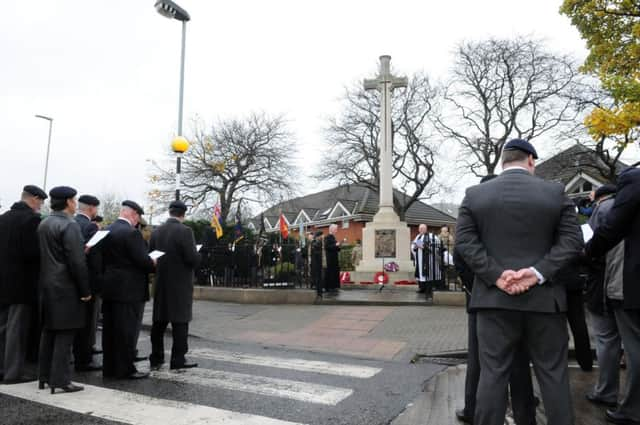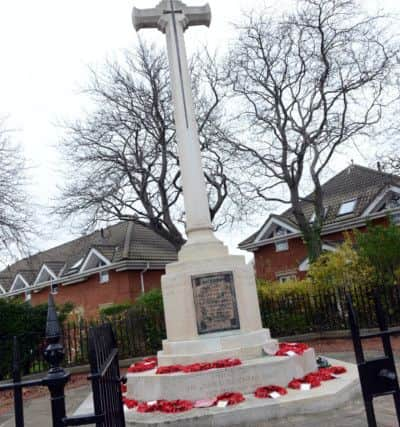South Shields war memorial protected with a Grade-II listing


Westoe Village War Memorial, on the corner of Horsley Hill Road and Westoe Road, has been listed under the Planning (Listed Buildings and Conservation Areas) Act 1990 by Historic England.
The First and Second War Memorial was created in 1926 to the designs of J H Morton and sculpted in Portland stone by William Robertson Cliff, of South Shields.


Advertisement
Hide AdAdvertisement
Hide AdIt has been given a Grade-II listing because of its historic interest as an eloquent witness to the tragic impact of world events on the local community and the sacrifice it made in the conflicts of the 20th century, and because of its attractive design in the form of a tall and slim Latin cross.
This war memorial was commissioned by South Shields War Memorial Committee to commemorate the 3,000 men of the town who died in the First World War. It was erected in 1926 within the grounds of Ingham Infirmary at a cost of £1,105.
The remainder of the money raised in the town was used to endow in perpetuity 24 cots for children at £500 per cot in a new wing of the infirmary. The memorial was designed by J H Morton & Sons of South Shields and the sculptor was William Robertson Cliff of South Shields.
Joseph Hall Morton (1849-1923) practiced in South Shields and has a number of listed buildings on the National Heritage List for England, including several in South Shields. He was a workhouse specialist and was responsible for all or parts of several workhouses in the North of England and the Midlands.


Advertisement
Hide AdAdvertisement
Hide AdIt was proposed that the memorial would be unveiled by the Earl of Durham on February 28, 1926, but due to illness it was instead unveiled by Sir James Readhead of Westoe Hall, President of the Ingham Infirmary. It was dedicated by Revd J Hudson Barker. The hospital, in whose grounds the memorial was erected, was partially demolished in the late 20th century.
The memorial stands at 25ft high and has a bronze crusader sword on the front and back and a rope moulding to the base of the shaft. It stands on two steps on top of a pedestal, which in turn stands on a 4-stepped octagonal platform. A bronze plaque on the pedestal has a raised decorated border with lettering in raised Roman capitals and reads: “To the glory of God and in memory of those of this town who laid down their lives in the Great War, this cross was erected and twenty four cots in the children’s ward of this infirmary were endowed by public subscription.”
Incised onto the stone which faces the bronze plaque are the dates ‘1914-1918’ and ‘1939-1945’.
Carol Pyrah, Historic England’s planning director in the North East, said: “Over a million Britons lost their lives in the First World War. It’s important that their sacrifice is not forgotten – and that the lessons learnt during that time are as resonant now as they were then.
Advertisement
Hide AdAdvertisement
Hide Ad“The centenary programme aims to bring us together more closely as a nation to honour the lives and bravery of all those who served. War memorials are a valued part of our heritage and it is absolutely fitting that we cherish and preserve them for future generations.”
She added: “Whether we have relatives whose names are on local memorials, or who fought alongside those who died, we all have a connection with remembrance. I would urge everyone to make sure their local memorial is in good condition. If it isn’t, then Historic England, the War Memorials Trust and the Heritage Lottery Fund all have grants and advice available.”